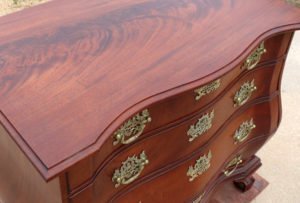
As a woodworker and furniture maker I am a big fan of Genuine Mahogany. It carves, saws, and planes so easily and you can’t beat the color and depth once finish is applied. However, it has been disconcerting to see how grade and availability have fallen off dramatically in the last year. South American Mahogany definitely isn’t what it used to be. What is most upsetting is that much of this is not due to environmental reasons.
Don’t get me wrong, the Mahogany forests were not managed sustainably in years past and many countries are still trying to recover from that. However CITES regulation is doing a good job in limiting the amount of Mahogany export and I think one can be optimistic about the health of those forests (at least in some countries). There is much greater involvement from outside organizations to subsidize the sawmills and oversee regulations and concessions. With greater involvement comes more politics and business and we have seen monopolies evolve and poor sawing practices that yield a higher net loss and poorer overall grade to this precious wood. The monopolies grab the small amount of good stuff and the rest of the market is then flooded with what amounts to a common grade.
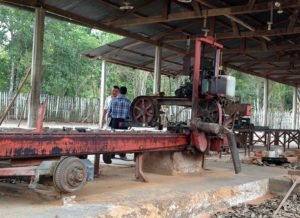 In general I think the North American market needs to learn to accept a wider range of grades as this is a natural building material and not plastic. We have been spoiled with perfect grades of tropical woods and expect that to continue while the rest of the world markets have long ago started accepting lower grades with natural “defects”. So when the majority of the Mahogany now coming out of South America is of a lower grade, the American markets push back and complain about the quality. NGOs in South America who are helping with conservation efforts are now pushing to implement NHLA grading standards for a more consistent playing field across exotic and domestic products in North America. Tropical woods have always had a different grading system due to the way the trees grow and their size. Essentially grading Mahogany to NHLA standards would be a way to allow more defects into each board and an overall lowering of the grading bar. The thought is that more of the lumber currently not being bought because it didn’t meet the grade will now have a home.
In general I think the North American market needs to learn to accept a wider range of grades as this is a natural building material and not plastic. We have been spoiled with perfect grades of tropical woods and expect that to continue while the rest of the world markets have long ago started accepting lower grades with natural “defects”. So when the majority of the Mahogany now coming out of South America is of a lower grade, the American markets push back and complain about the quality. NGOs in South America who are helping with conservation efforts are now pushing to implement NHLA grading standards for a more consistent playing field across exotic and domestic products in North America. Tropical woods have always had a different grading system due to the way the trees grow and their size. Essentially grading Mahogany to NHLA standards would be a way to allow more defects into each board and an overall lowering of the grading bar. The thought is that more of the lumber currently not being bought because it didn’t meet the grade will now have a home.
In our opinion this will be disastrous for the Mahogany trade. NHLA was created with furniture parts in mind because that was the primary industry when the grading system was implemented. Mahogany while a hallmark of fine furniture is now primarily used as a milled product requiring zero defects over a long board. Defects in general are not acceptable in a moulded product and by “dumbing down” the grade the net result will be many more unusable boards being passed off as FAS. To me this is just wasteful. If fewer trees need to be cut resulting in less board feet exported, fine. If that is what is good for the forest we would support it completely. But when the material that is exported is practically unusable because of the low grade, the entire export is useless. It isn’t that these mills don’t know how to saw for quality. In fact many of them have long histories of doing just that. On a recent visit to South America we were disheartened to find that the general practices being taught by outside organizations is to saw for quantity not quality. Is it any wonder why the NGO’s are pushing for a lessening of the grade? The fact is that even if we apply NHLA grading standards to this Mahogany we are lucky to get a Select grade. More often than not it is #1 Common.
So after centuries of steadily carrying Genuine Mahogany, J. Gibson McIlvain is going to be backing away from the product. We won’t stop carrying it. In fact we still have over 150,000 board feet in stock. But we have pulled back on buying more and are concentrating on African species that yield a highly stable board with plenty of length and width. Species like Sapele, Utile/Sipo, and even African Mahogany (Khaya) embody the best that Genuine Mahogany has to offer and are more durable and able to take fine moulded details better. Moreover, Africa has multiple verification and certification schemes that makes it easy to track our inventory to the stump for legality and conservation reasons. More on that in a future post. For now know we are keeping a close eye on the South American Mahogany market and we will still help you if that’s what you need. Just don’t be surprised if our team tries to convince you to use an African species first.
Have you tried an African species alternative to Mahogany? You should, it may surprise you.

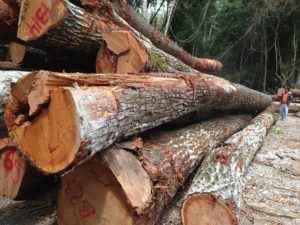

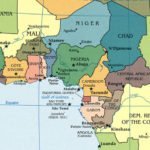
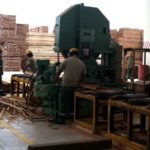
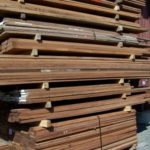
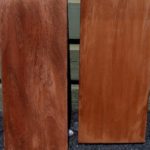
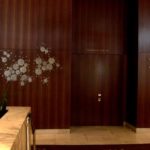


Hi – Even though I don’t use much Mahogany in my work I find your articles on the subject very interesting. To me it is an study on how perception and tradition shape behavior, even in the face of better alternatives. Whoever decided to call south american mahagony “genuine mahogany” was a genius because it certainly makes everything else seem a cheap imposter.
In the past you have suggested Red Grandis and Fijian Plantation Mahogany as alternatives to South American Genuine. You don’t mention these in this article. Did your customers not find them to be acceptable? Or can you not get them in the quanitity and lengths you need for mill work?
Good eye Mike. Both these species will work as alternatives but they are still developing markets and production processes. There are bugs to works out in the supply chain and in some instances the drying techniques aren’t fully up to snuff. The other issue is this stubborn resistance from much of North American wood users to switch to a new product. Like any industry, when the market isn’t buying, it is very hard to justify keeping the supply chain going. We continue to monitor both of these species and do have some of each in our yard.
Oh yeah, and lumber terminology is all about marketing spin. Look no further than names like Brazilian Teak or Brazilian Cherry for Cumaru and Jatoba. It all comes down to making the strange familar. In Mahogany’s case there are a lot of proposed alternatives to the species that are just crap so someone decided to reclaim the good stuff from the imposters.